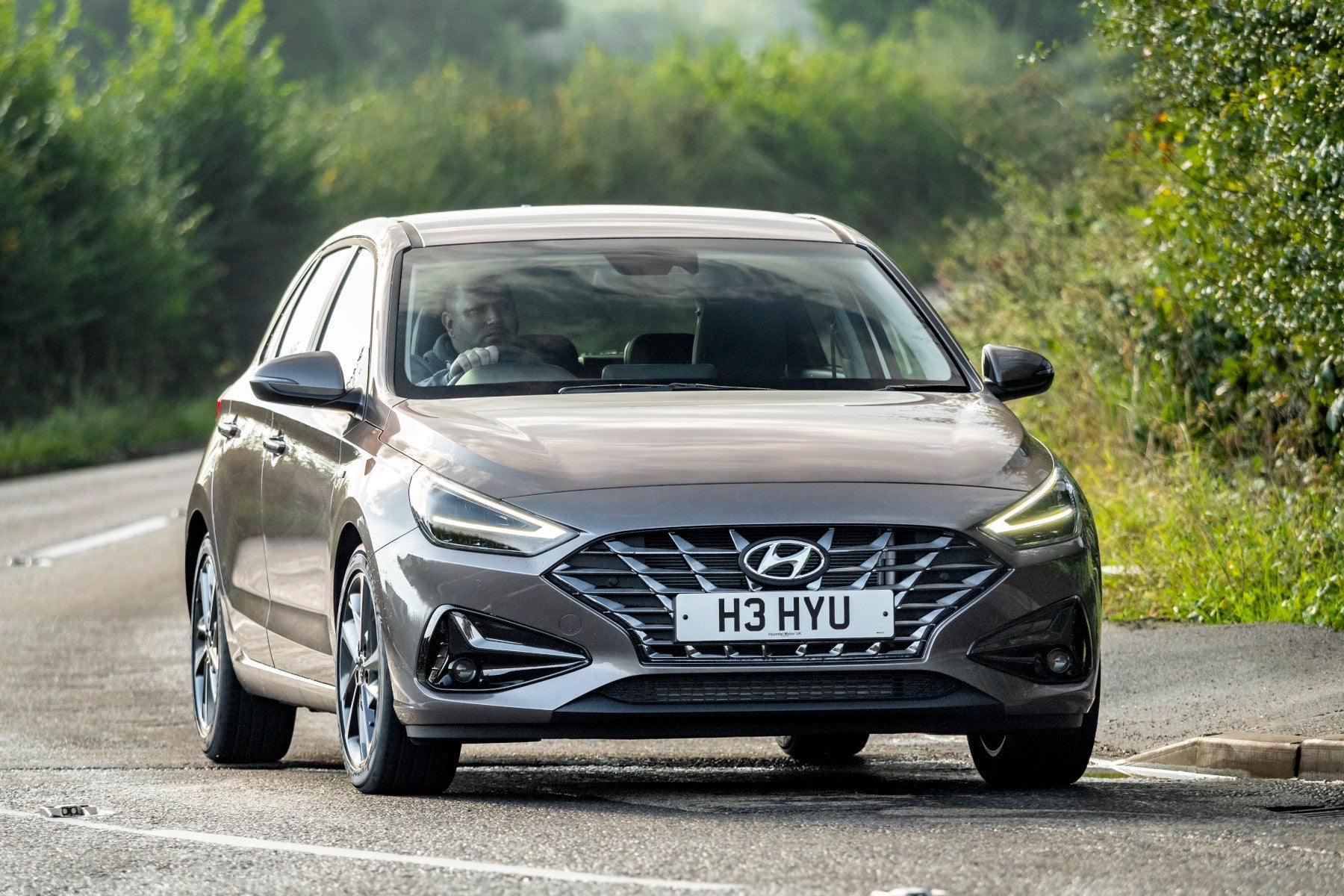Skoda Scala Review 2024
Written by Phill Tromans
Quick overview
Pros
- Comfortable and secure on the road
- Roomy cabin and a big boot
- More affordable than most of the competition
Cons
- Some clever features are only options
- Early entry-level cars are sparsely equipped
- Not particularly involving to drive
Overall verdict on the Skoda Scala
"The Skoda Scala is one of the most affordable Skodas you can get, but it gives you a very solid impression of the firm's larger, more expensive cars. It's comfortable and feels solid to drive and is available with a lot of tech that you'd normally find on larger, pricier machines. There's loads of room inside compared to most rivals and it starts at an impressively low price, undercutting much of the opposition. There are cars of this type that we rate more highly in certain areas, but the all-round appeal of the Scala and its low price means it should feature on your shortlist."
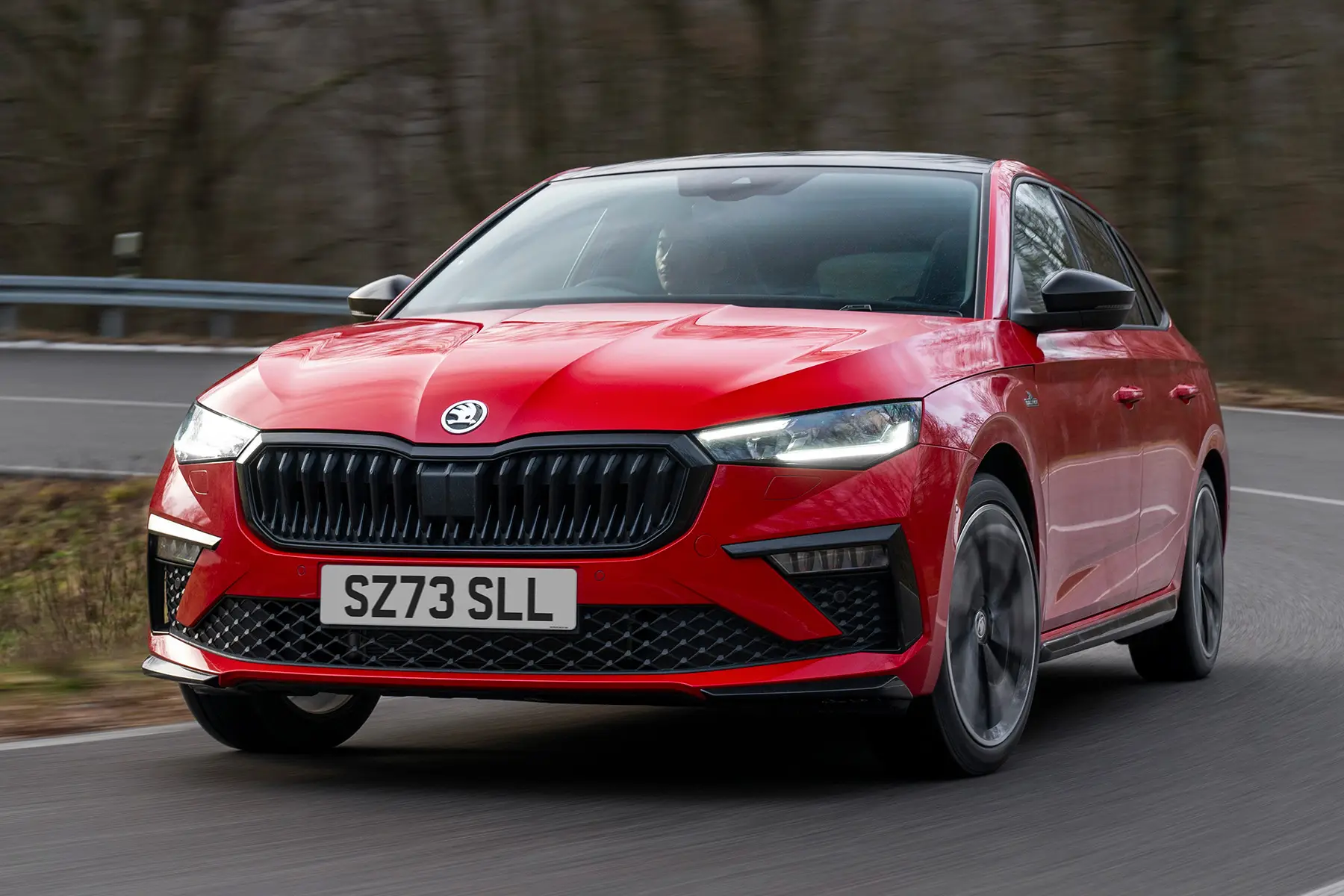
Skoda has developed a well-deserved reputation over recent years for producing cars that focus on the most important aspects that a customer wants, and executes them superbly. The Scala is the second smallest car in the Czech brand's range (it's slightly bigger than the Fabia), and it very much follows the same philosophy as larger models, such as the Octavia and Superb. It's not trying to be sexy or scintillating to drive, or to be crammed with the latest gimmicky tech – rather it wants to nail the basics and add a few more treats that make the everyday motoring experience as straightfoward.
You'll want to consider the Scala alongside myriad established rivals, such as the Ford Focus and Vauxhall Astra, the Volkswagen Golf and maybe even more premium options like the Audi A3 and Mercedes-Benz A-Class. Where the Scala excels is in its size, with loads of interior space and a sizeable boot, and in its pricing, with purchase prices that undercut much of the opposition.
Early Scalas were a little on the under-equipped side as standard, meaning you'd want to avoid the entry-level S model unless you were really on a tight budget. But the Scala was given a facelift in 2024, giving it a more up-to-date look with new, slimmer headlights, LED fog lamps and redesigned grille and foglamps. At the same time, the trim levels were slimmed down so that the current entry-level model – the SE – now has more standard equipment than before, while higher trim levels now have more advanced features, such as matrix LED headlights.
To drive, the Scala doesn't have the feeling of agility that you'll get in a Ford Focus or a Vauxhall Astra. Rather, it gives you a more mature, comfort-focused experience. If you want something a bit more dynamic then the top-spec Monte Carlo model adds a hint of sportiness, but it's no hot hatch. That said, the Scala feels confident through corners and stable on the motorway.
The engine line-up is straightforward, with as leection of efficient petrol and diesel engines and a choice of manual and automatic gearboxes. There's no electrification here, which some rivals will offer, but it does help to keep purchase costs down.
You’ll enjoy fantastic all-round visibility from the driver's seat, the user-friendly nature of all the various controls and the peace-of-mind you get from its five-star Euro NCAP safety rating. Essentially, the Skoda Scala is an exceptionally good all-rounder.
Looking for a used car for sale? We've got 100s of Skoda Approved Used Cars for Sale for you to choose from, including a wide range of Skoda Scala cars for sale.
Is the Skoda Scala right for you?
Are you looking for as much car as you can possibly get for as little cash as possible, and don't really have much interest in a sporty driving experience? Then the Scala could well be the car for you. This is one of the roomiest cars in the class, and also one of the most affordable, and since its 2024 facelift it's got more kit than ever.
However, Skoda already covers this area of the market with the excellent Octavia, so why consider the Scala? While the Octavia is an even roomier, slightly pricier and more upmarket offering, the Skoda Scala is designed for those people who don’t need quite so much space, and are operating on a rather tighter budget. And on that score, it does a fantastic job.
What's the best Skoda Scala model/engine to choose?
For our money, the Skoda Scala makes most sense with a petrol engine (badged TSI), and it’s the 115PS version of the 1.0-litre that has impressed us most so far. It’s actually more efficient than the entry-level 95PS option, but it still keeps purchase prices down, and it’s impressively smooth and punchy. Post-facelift Scalas ditched the diesel option entirely, so that makes things even easier. They also claim to have boosted power to 116PS rather than 115PS, but don't be fooled – the power is the same, rthey just rounded up rather than down. However, the engines in the post-facelift car are slightly more efficient than earlier models.
When it comes to your choice of trim level, pre-facelift S models are rather spartan, and while the ones at the top of the range are better, although there are some features that you'd expect as standard that buyers are required to pay extra for. Things are better in the post-facelift models sold from 2024 onwards, but in the end, our recommendation for both versions is Skoda Scala SE, which gives you most of what you really need without taking purchase prices too high.
What other cars are similar to the Skoda Scala?
The Skoda Scala has no shortage of competitors, as this is one of the most fiercely-fought sectors in all of motoring. Sitting at the more affordable end of the family hatchback scale, the main competition comes from cars like the Ford Focus, Hyundai i30, Kia Ceed and Vauxhall Astra.
The Volkswagen Golf costs buyers a little bit more, and bridges the gap to more premium offerings like the Audi A3, BMW 1 Series and Mercedes A-Class. You also have dozens of small SUVs competing for the same cash.
Comfort and design: Skoda Scala interior
"The interior of the Scala is smart if rather understated, although it's a little jazzier on the post-2024 facelifted model, with fabric upholstery on the dashboard to create a cosier feel. The dash is appealingly simplistic and easy to use. While so many carmakers are looking to cut down the number of physical switches and buttons, cramming all functions into a touchscreen, Skoda has sensibly kept key controls more traditional. So your ventilation and AC controls are separate and easy to use without tapping through submenus, and the Scala is all the better for it."
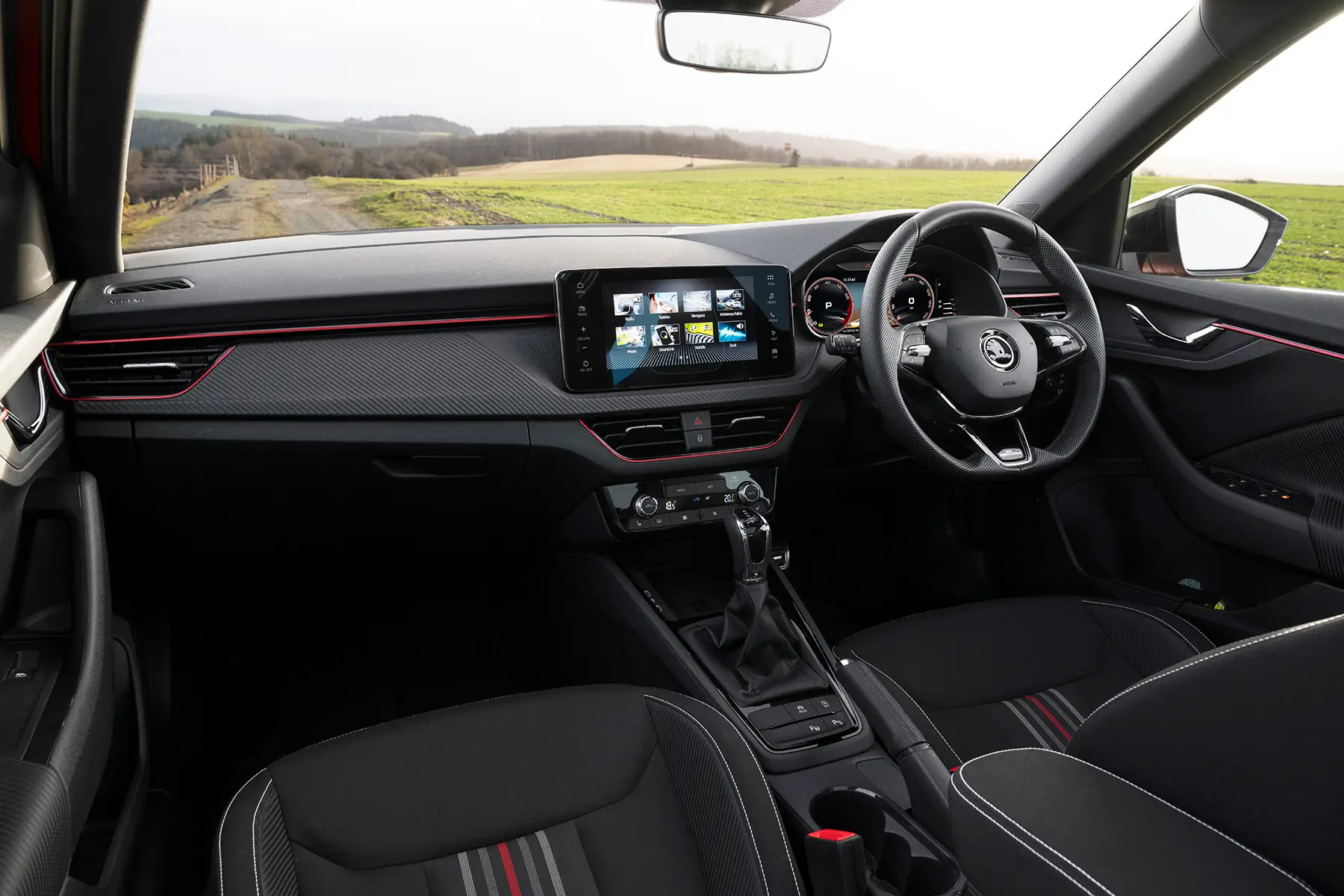
Happily, visibility is better than it is in the majority of the Scala’s rivals. The skinny windscreen pillars mean your view isn’t blocked at junctions, and thanks to similarly skinny pillars at the rear, either side of a large, square rear window, your rear-view is also impressively clear.
The driver’s seat is fairly supportive, although some drivers might welcome a bit more side support, which you'll get from sports seats if you go for the top-spec Monte Carlo model. There’s bags of adjustment in the seat and steering wheel to help you find a comfy driving position.
Quality and finish
The savings made while trying to keep the Scala's price down are perhaps most evident in the materials used, but you do have to look quite hard to find them. Some of the plastics used are rather hard and less tactile than some rivals, but then Skoda has done well to restrict these to areas lower down the car that you're less likely to touch.
Premium-feeling it might not quite be, but it's certainly not bad, and it's better in the facelifted car, where clever use of fabric on the dash, plus the improved tech on offer, makes it feel more upmarket than before. The Scala's interior also feels very robust and well bolted together, which makes it feel like a quality product that's built to last.
That said, while the materials aren’t the last word in plushness, they do look and feel incredibly robust, and the substantial way in which they’re bolted together also helps give the Skoda Scala a built-to-last feel.
Infotainment: Touchscreen, USB, sat nav and stereo in the Skoda Scala
The nature of the infotainment system you get depends on the grade of car you choose, and whether you go for a pre- or post-facelift model. We’d avoid the pre-facelift entry-level Skoda Scala S on this score, because it gets a very basic system with a tiny 6.5-inch touchscreen system. It comes with Bluetooth, DAB radio, four speakers and a couple of USB-C ports, but that’s about it.
Upgrade to the Scala SE, and you get a bigger 8.0-inch screen with eight speakers, but the biggest difference is that it comes with Smartlink, a system that rolls up Apple Carplay, Android Auto and Mirrorlink – the most common smartphone integration systems – into one package. So, whatever phone you have, the Scala should be able to work with it, and it means you can use your phone’s navigation functionality through the car’s screen. In post-facelift cars the Smartlink system is wireless and you also get 4 USB-C charging points for your various devices, witrh faster charging than earlier cars. Later cars also get a digital instrument panel as standard, in place of traditional analogue dials.
The Skoda Scala SE L and the Monte Carlo both get a system with a bigger 9.2-inch screen and built-in navigation, although unlike the rest of the infotainment system, we found the nav rather unintuitive to use. Honestly, recommend just connecting your phone and using navigation apps that way instead. The SE L and Monte Carlo also get a larger digital instrument panel, called Virtual Cockpit.
Each touchscreen system uses the same basic user interface, and it’s pretty intuitive and easy to find your way around. Being a touchscreen, it’s a little more distracting than some other types of interface because you have to stare at the screen so intently to make sure you hit the right bit, but as touchscreens go, it’s not bad at all.
Space and practicality: Skoda Scala boot space
The Skoda Scala is 4362mm long, 1988mm wide (including door mirrors) and 1471mm tall. That means it's slightly bigger than a Volkswagen Golf or Ford Focus.
Providing maximum space for minimum money has always been Skoda’s party piece, and the Scala is no different. Nobody’s going to struggle for space in the front seats, and there’s also more rear space than in most rivals, with generous headroom and loads of legroom that allows lofty passengers to stretch out. A pair of bulky child seats will be no bother, either.
The cabin is narrower than it is in some rivals, making it a bit more of a squeeze to carry three people across the rear bench, but any car in this class will have this problem to a certain extent. At least the middle seat is wide and not too raised, and because the central transmission tunnel is relatively narrow, it’s not uncomfortable to sit with your feet either side of it.
With a massive 467 litres of luggage space, the Scala's boot is also considerably bigger than you get in most rivals. The Octavia and Honda Civic have more still, but the Scala has pretty much every other rival beaten on this score. The space is also a nice square shape, and the rear seats fold in a 60:40 split to allow you to boost your load-carrying capacity. However, those seats lie at a slight angle, and there’s a sizeable step between them and the boot floor, not to mention a sizeable load bit at the boot opening. This can be levelled off by using the variable boot floor, but it’s a bit disappointing that this is an optional extra on all versions.
Handling and ride quality: What is the Skoda Scala like to drive?
"The Skoda Scala's standard suspension does a really good job. It has a soft, forgiving set-up that keeps life impressively comfortable and cosseting, and that’s regardless of whether you're crawling along craggy urban streets or steaming along motorways. "
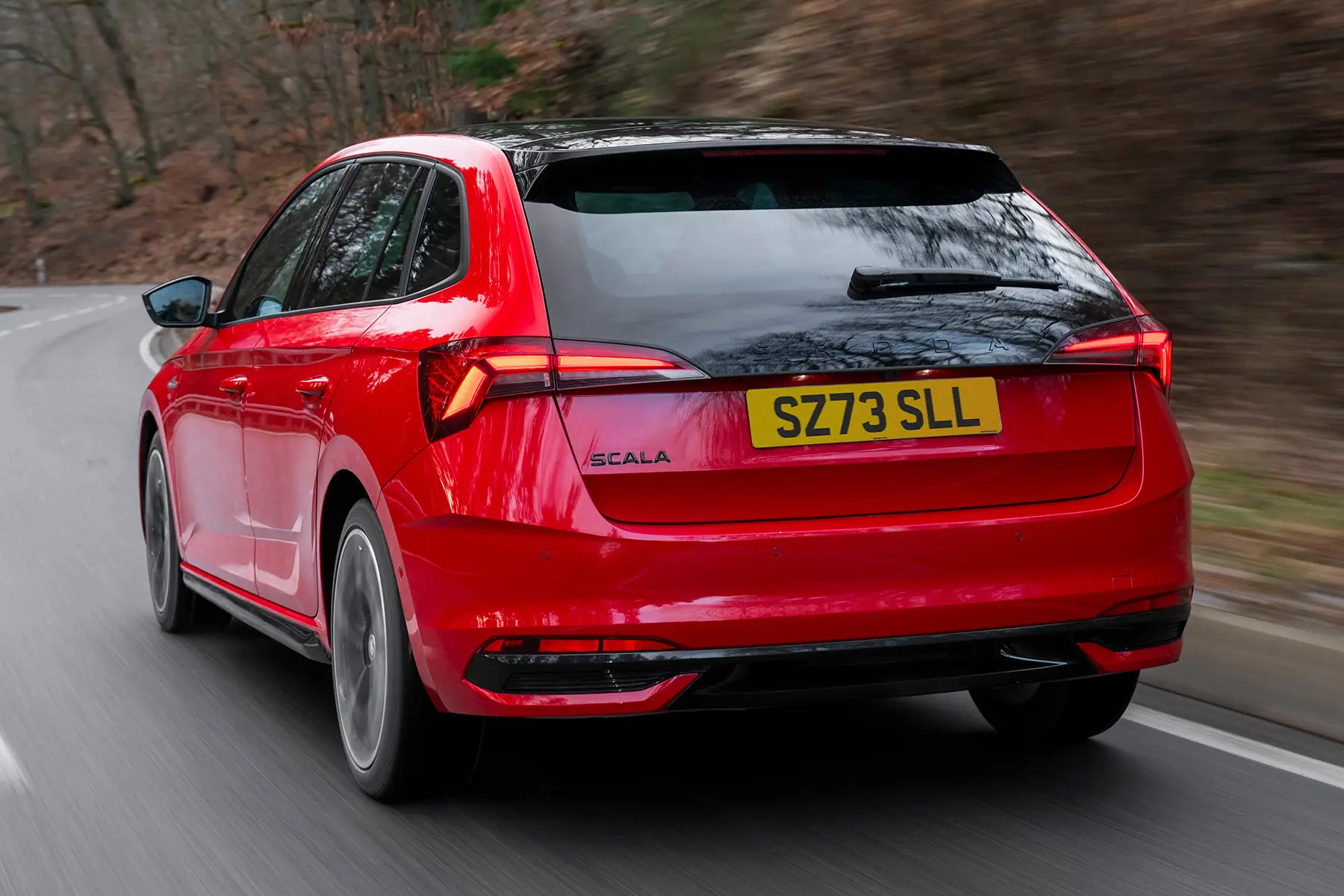
Despite the Skoda Scala's impressive comfort, there’s still enough control in the suspension to keep the body from bouncing up and down too much on undulating country roads, or from leaning over too much in bends, making the car feel secure and tidy.
Okay, it's not the sharpest-handling hatchback you'll ever drive – a Ford Focus will provide plenty more thrills for keen drivers – but its mixture of civility and security is arguably more important, and certainly worth the trade-off.
The Scala is also offered with an adaptive sports suspension as an optional extra (standard on the post-facelift Monte Carlo). This changes its behaviour according to which driving mode you select. We’d avoid it. Regardless of the mode, it makes the ride quite a lot firmer and lumpier, and it doesn’t really make the car any more enjoyable in the corners. The option was dropped for the facelifted model.
What engines and gearboxes are available with the Skoda Scala?
Scala buyers have the choice of three turbocharged TSI petrol engines: a pair of 1.0 TSI three-cylinder engines with either 95PS or 115PS (labelled as 116PS on the post-facelift Scala), and a four-cylinder 1.5 TSI with 150PS. Post-facelift cars have engines that are slightly more efficient.
The 115PS is a proper little belter. With impressive low-down pull, it feels responsive and surprisingly strong from anywhere on the rev range, so not only is your progress adequately brisk, it’s also easy and effortless. We've yet to try the 95PS model.
The 1.5 TSI is a fraction quicker against the stopwatch, and has a similarly perky character. However, in 90 percent of driving situations, it doesn’t feel a whole lot faster than the smaller engine, so we’d probably save the extra it costs to buy.
A diesel choice was also offered on the pre-facelift car – a 1.6 TDI with 115PS. It gives you decent pace, but it doesn’t feel as lively or as eager as the petrol, and overall, it doesn’t suit the car as well. It costs quite a bit more than the equivalently powered petrol engine, too, and you’ll have to cover a lot of miles before its superior fuel economy overturns the difference.
All engines are offered with a reasonably slick six-speed manual gearbox, while all but the 95PS petrol are also offered with a seven-speed twin-clutch automatic. It slurs through the gears pretty effectively, keeping your progress smooth and responsive.
Refinement and noise levels
The smallest petrol engines may be three-cylinder units, but they do a good impression of ones with an extra cylinder, staying smooth at all times and not getting too thrummy or thrashy when you rev them hard.
Even so, the four-cylinder 1.5 TSI is quieter and smoother still, with even fewer vibrations making their way through to the cabin. The diesel is the most rowdy engine of the bunch, with a distinct clatter at idle and when you pile a few revs on. However, it’s not too bad compared with the diesel engines in some rivals, and it settles down well enough once you reach motorway cruising speeds.
Compared with rivals, there’s more wind and road noise to be heard in the Scala at high speed, and you hear a fraction more from the Skoda’s suspension as it goes about its work. Still, while it lags behind its best rivals, it’s far from raucous. What’s more, its nicely weighted, consistent-feeling controls make the Scala easy to drive smoothly.
Safety equipment: How safe is the Skoda Scala?
It's a bit of a mixed bag here, if we’re honest. Importantly, the Scala scored the full five-star rating when it was tested by the safety experts at Euro NCAP, and its individual section ratings also look reasonably good as well.
The safety kit you get as standard includes a very run-of-the-mill six airbags, automatic emergency braking, lane assist and automatic emergency calling. However, lots of other stuff that rivals might provide as standard cost extra on the Scala – a driver’s knee airbag and front parking sensors, for instance. Buyers also have to pay extra for adaptive cruise control and a self-parking function, and features like blind-spot detection and even rain sensors for the windscreen wipers are only options, and even then only on the top-spec Monte Carlo model. A space-saver spare wheel is included on pre-facelift cars, but is only an option on post-facelift models.
MPG and fuel costs: What does a Skoda Scala cost to run?
"It’s no surprise that, according to the official figures, the diesel Scala will give you the greatest amount of range for every gallon of fuel you put in. The latest WLTP figures suggest that up to 60mpg is possible, dropping to around 56mpg if you add the automatic gearbox."

Before you buy, though, make sure you’re going to cover enough miles to make up for the considerable amount more you’ll pay for the diesel.
If you want a new Scala then petrol is your only choice, as the diesel models were dropped with the 2024 facelift. In the pre-facelift Scala, the best of the petrols is actually the 115PS version of the 1.0 TSI, with a figure of 51mpg compared with the weaker 95PS version’s 50mpg.
Post-2024, however, the engines were tweaked for efficiency, and the 1.0 TSI, now labelled with 116PS, will deliver up to 54.8mpg, versus 55.4mpg for the 95PS model.
However, the 1.0-litre engine’s return drops to 48mpg if you add the twin-clutch automatic gearbox (52.9mpg post-facelift), while the 1.5 TSI delivers 49mpg in manual form and 46mpg as an auto in earlier cars, and 52.3/2.1mpg in the facelifted model.
How reliable is a Skoda Scala?
Skoda might be a budget brand, but it shouldn't leave you stranded on the side of a motorway. It came second in the 2020 HonestJohn.co.uk Satisfaction Index, narrowly losing out to premium carmaker Lexus. However, its ranking had dropped to 13th of 29 by 2022, which is of mild concern.
We don't have a great deal of data on the long-term reliability of the Scala, but it shares engines and mechanical bits with a wide range of Volkswagen Group cars. That means it ought to be pretty dependable, while sourcing parts shouldn't be an issue, either.
That said, we've heard numerous complaints – from Skoda customers and those of other Volkswagen Group cars – about infotainment software playing up and other electronic gremlins, so it's worth checking that any used model you get has had all the latest software updates from the main dealer.
Insurance groups and costs
If you’re buying a budget-focused car like the Skoda Scala, you don’t want to pay a king’s ransom to insure it, and the good news is that you won’t. Insurance groupings for the pre-facelift Scala range from 10 at the bottom of the scale to 19 at the top, with most versions sitting at around the 14 mark.
We don't have the insurance grouyp information for the post-facelift model at the time of writing, but they're unlikely to change dramatically. So, if you have a decent no-claims-bonus, premiums should be very palatable.
VED car tax: What is the annual road tax on a Skoda Scala?
Easy one, this. Whichever version of the Scala you pick, you’ll pay annual Vehicle Excise Duty (car tax) of £180 per year from the second year of registration. That’s because it was introduced in 2019, after the Government had brought in a flat rate for petrol and diesel cars, and no version is expensive enough (even if you add all the optional extras it’s possible to add) to make it liable for the temporary surcharge of £390, applied to cars that cost more than £40,000 new.
If you're buying your Scala new, all models sit in VED band G, which means a first-year tax of £210. However, that's all included in the price you'll pay to get your new car on the road, so you shouldn't really notice it.
Company car users pay Benefit-in-Kind tax on 28% of the car’s value.
How much should you be paying for a used Skoda Scala?
"The Skoda Scala is priced to undercut its rivals, and it does. Compared with rivals like the Volkswagen Golf and Ford Focus, it undercuts them by a lot, and with rivals like the Kia Ceed and Vauxhall Astra, it undercuts them by less, but still by a useful amount."
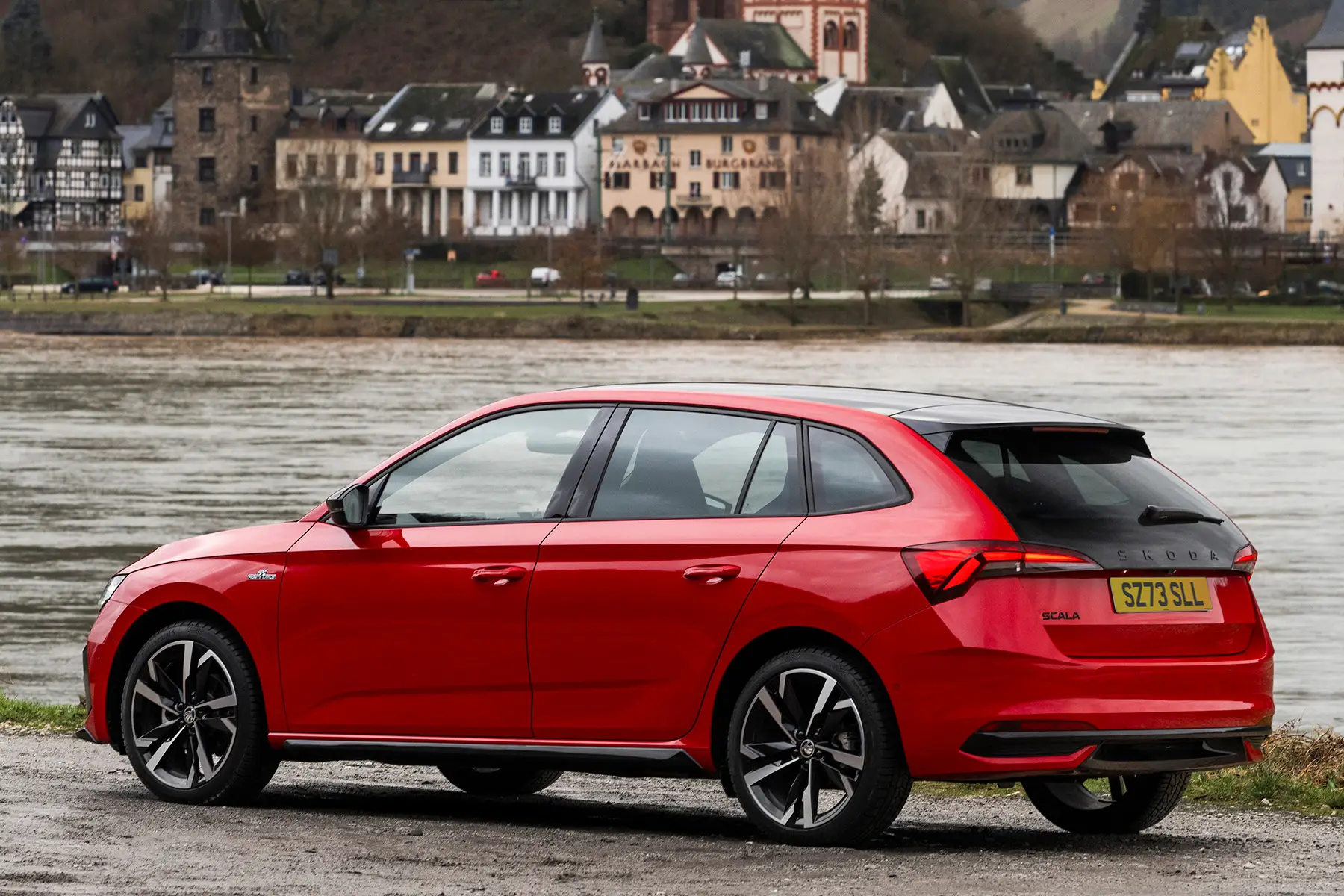
A new Scala will cost you, at the time of writing in early 2024, from £22,095 for the entry-level 1.0 TSI 95PS SE, up to £30,445 for a top-spec Monte Carlo 1.5 TSI DSG. That's impressive value – the cheapest Ford Focus will cost you from £28,490, a Vauxhall Astra will cost you from £26,290 and a Volkswagen Golf starts at £26,945.
The even better news for used buyers is that the Scala doesn’t cling onto its value as well as most rivals, so prices for second-hand examples will be even lower. A check of the classifieds shows some high-mileage examples from around £8000, while cars with less than 50,000 miles start from around £10,000 – at least £1000 less than an equivalent Volkswagen Golf.
Trim levels and standard equipment
On top of the safety and infotainment kit we’ve already talked about, the pre-facelift entry-level Skoda Scala S comes with alloy wheels, LED headlights, manual air-conditioning, remote locking, four powered windows and electric door mirror adjustment.
We reckon it's worth upgrading to the SE for the better infotainment system alone, but doing so also earns you niceties including cruise control, automatic lights and wipers, front foglamps and rear parking sensors. The SE is the entry-level model for the post-facelift Scala, and comes with full LED headlights and LED rear lights and dual-zone air conditioning.
The price jump to the Scala SE L gets you the top-grade infotainment system, privacy glass, two-zone climate control, cornering foglamps, LED rear lights, part-suede-effect upholstery and keyless start. On post-2024 cars it gets you an upgrade from 16-inch wheels to 17-inch units, dynamic turn indicators on the back lights and chrome window frame surrounds, as well as a rear centre armrest and automatic lights and wipers. However, you no longer get keyless start included.
The range tops out with the Skoda Scala Monte Carlo, which adds sportier styling touches. On the pre-facelift model you get a panoramic roof and a few extra leather bits dotted around the cabin, while the post-facelift Monte Carlo gets cornering fog lights, keyless entry and engine start and a rear-view camera, as well as the Sport Chassis Control adaptive suspension. You'll also get matrix LED headlights, which cleverly maintain full beam while tracking oncoming traffic and keeping it in shadow. This maintains maximum visibility ahead without dazzling other drivers, and it works very well. It's an option on the SE L model.
The amount of stuff left on the options list, even on the range-topping versions, is perhaps a little surprising. Electrically adjusting seats were available on the pre-facelift cars but not on post-2024 models, and the same is true of part-leather upholstery. A reversing camera was only an option pre-2024, although it was then included on the Monte Carlo. Adaptive cruise control, wireless phone charging, front parking sensors and heated seats are all available, but no version gets them as standard.
Ask the heycar experts: common questions
What is the Skoda Scala based on?
What is the best Skoda Scala to buy?
Is the Skoda Scala expensive to insure?
Which Skoda Scala has the best MPG?
Stay up to speed with great offers plus the latest car news and reviews
Keep me updated by email with the latest advice, news and offers from heycar.
By submitting you agree to our privacy policy


